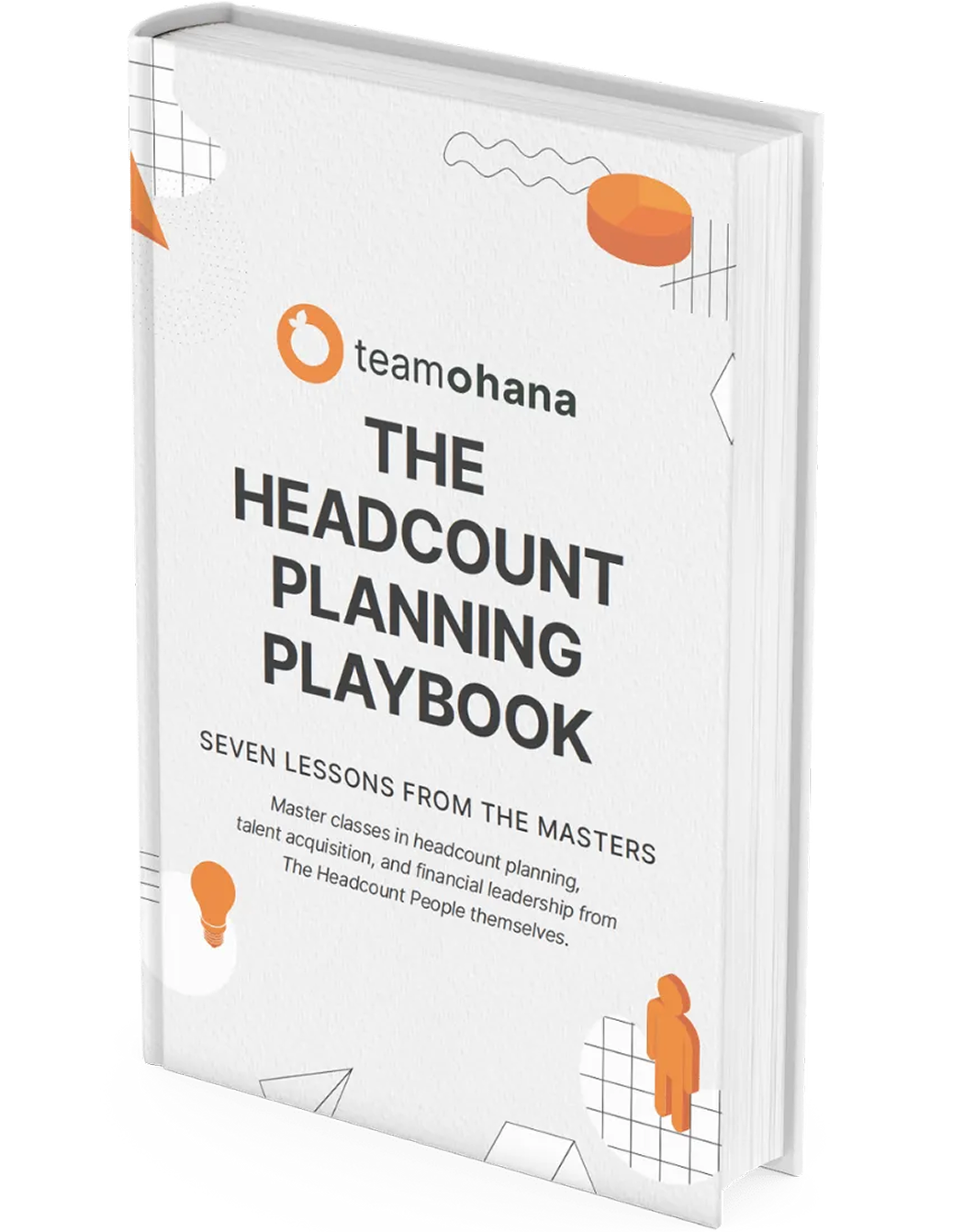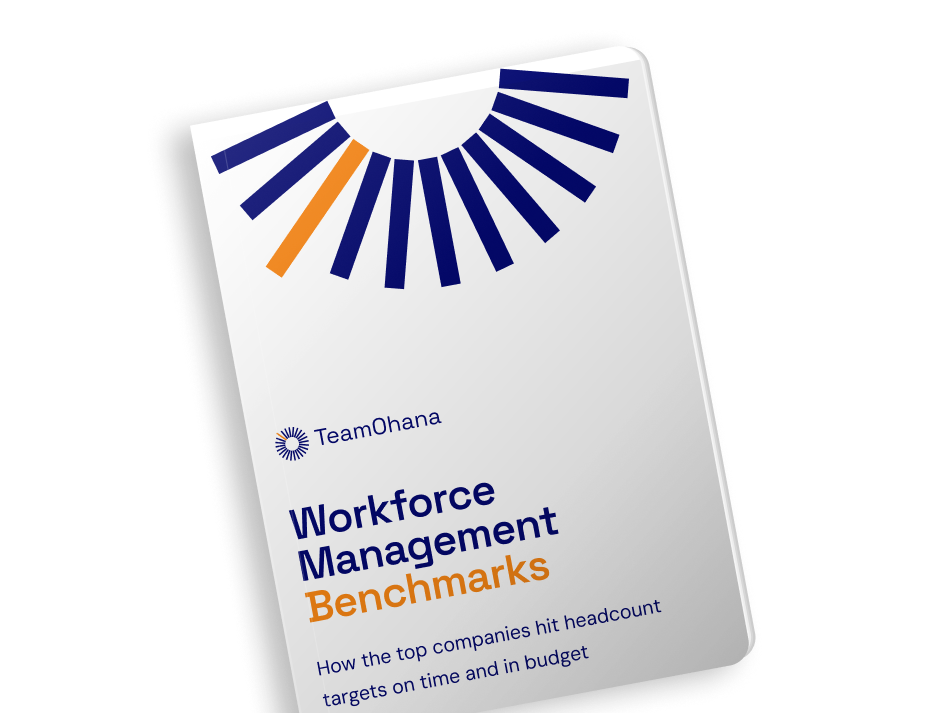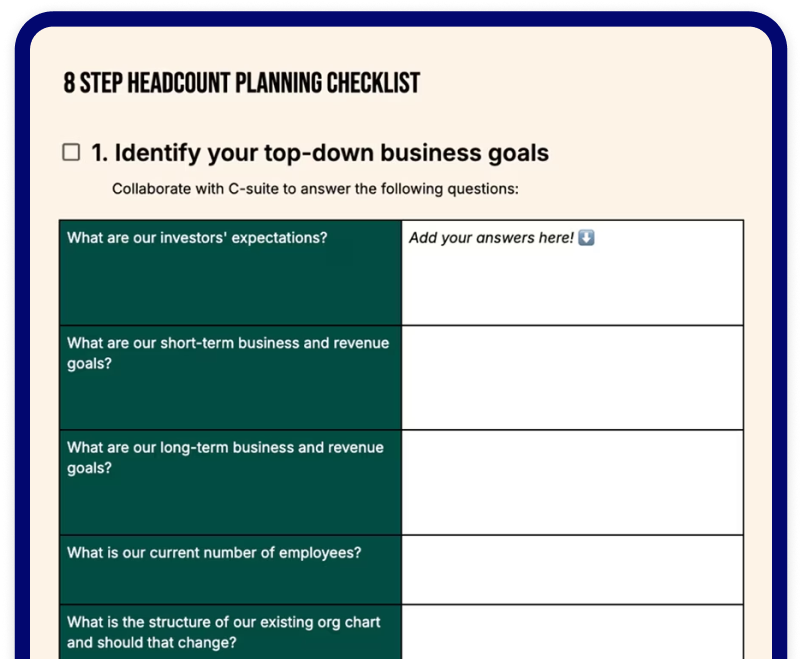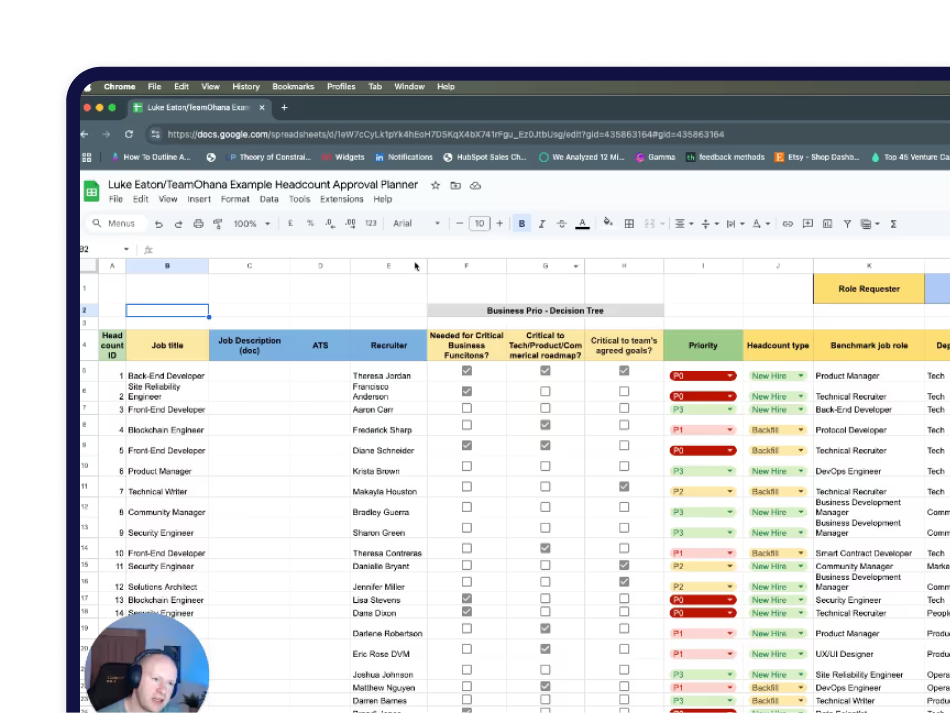The headcount planning playbook
Headcount planning can be a chaotic, manual, and tangled process. But it doesn't have to be. Our playbook is your guide to unraveling the complexities, fostering true collaboration, and elevating your team's approach. Dive into exclusive interviews with top industry leaders, exploring their unique and invaluable strategies for streamlined headcount planning. Say goodbye to confusion and welcome a new era of effective collaboration. Your path to successful headcount planning starts here.

Why we created this playbook
People drive company success. Look at any company, and you’ll see the same. It is the people who build incredible products that solve problems, market and sell to customers, and help your company grow. At the same time, people are also the biggest cost in any operating budget, typically accounting for approximately 70% of total spend.
In other words, people are both your greatest asset and largest expense. This dichotomy creates complexity in the people planning process. Companies must spend on headcount in order to grow, but they cannot overspend. They must hire within budget, but they cannot hire too slowly or they’ll miss goals.
Headcount planning and management is a complex process that requires thoughtful collaboration from more than a few people. It is truly a team sport. Yet, the tools and processes we use promote siloed work and confusing workflows, not collaboration and efficiency. We figured it's a challenge best solved by talking to the people who are getting it right time and time again. So we went out and interviewed them.
In our chats with some of the foremost thinkers in the headcount planning space, we were able to identify the top reasons they've been successful and compile them into one definitive playbook for Headcount Planning. We hope it helps you on your path to efficient growth.



